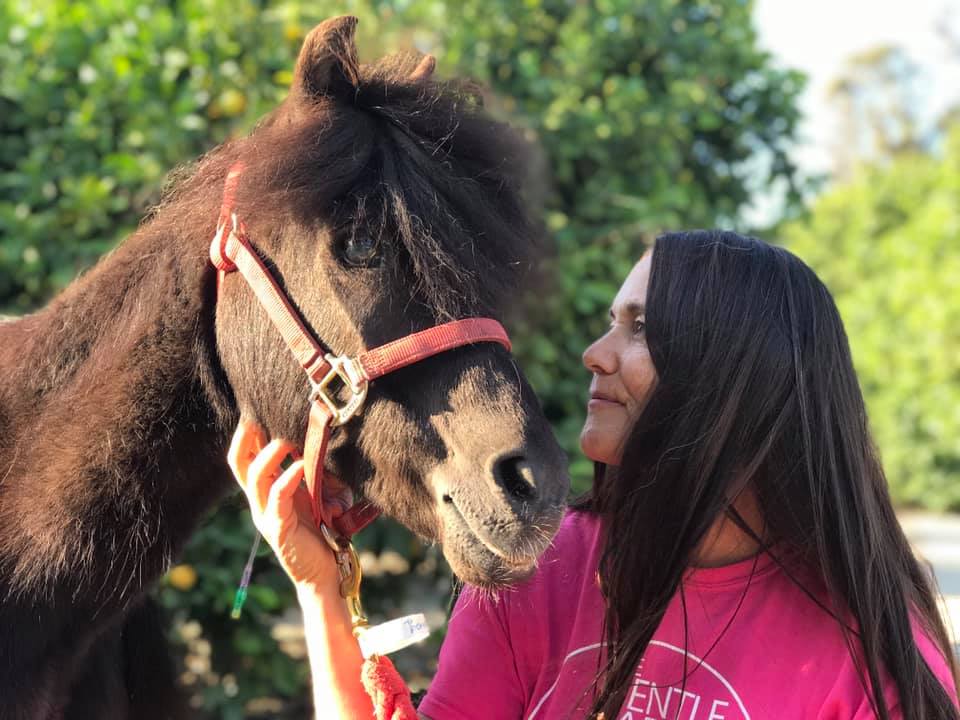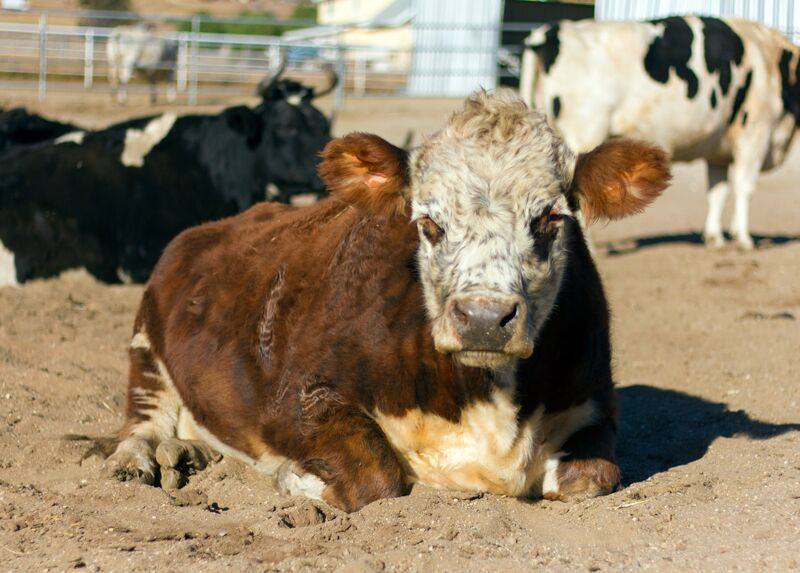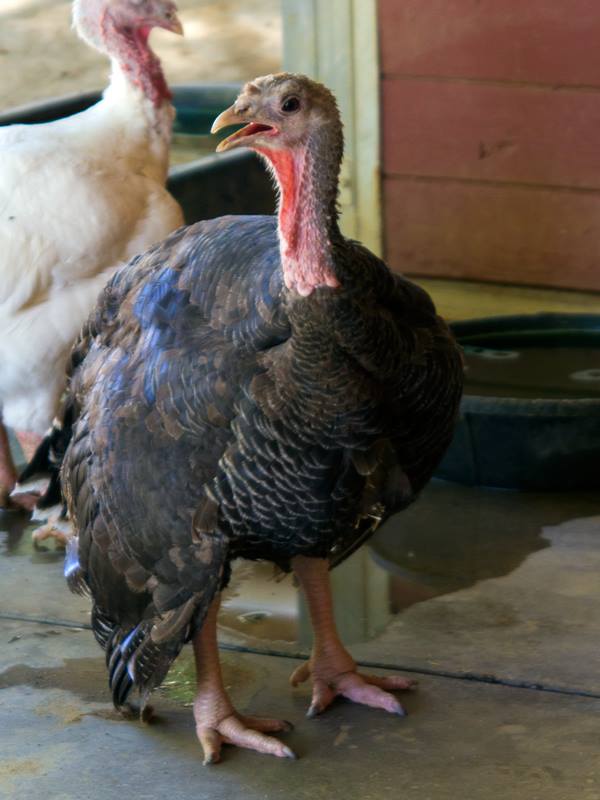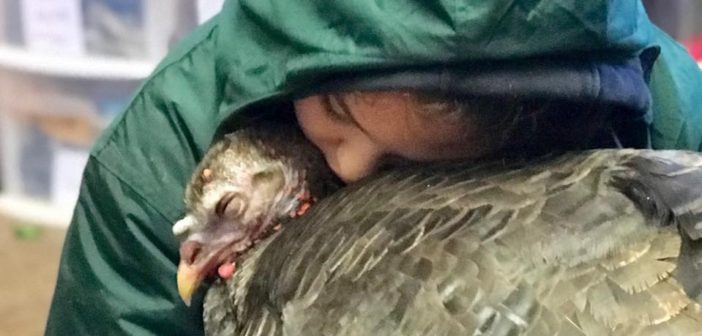Animal sanctuaries perform an important part of the work of protecting and liberating animals. While we push for big, systemic changes that benefit animals, it’s also important not to lose sight of the individual. Sanctuaries provide a rare place where animals can live out their lives in peace, free from the cruelty and exploitation that plague their kind elsewhere. These places bring to life the alternative world we are fighting for, where relationships between humans and animals are structured altogether differently and founded on compassion and care.

The Gentle Barn is one of those places, providing a safe home for abused and neglected animals who aren’t a good fit for adoption. Founded in 1999, they have since grown to three locations in Santa Clarita, Nashville, and St. Louis, which house over 170 animals of various species.
In an interview with The Gentle Barn’s founder, Ellie Laks, we discussed what she’s learned over the past two decades, the role of sanctuaries, and the transformative power of spending time with animals.
Dylan Forest: How did you start out rescuing animals, and was your intention always to grow to this point?
Ellie Laks: The Gentle Barn was my dream since I was seven years old. I always loved animals and noticed that the people around me did not, so I would yell at my poor parents as often as I could, “You’ll see, when I grow up i’ll have a big place full of animals and I’ll show the world how beautiful they are!” It was the only thing I could think about.
I didn’t know how to start The Gentle Barn, so for years I procrastinated, until I drove by an abusive petting zoo and went in to be nosy. I found so much abuse and neglect there. I ended up bringing home sick and injured animals from that petting zoo, healing them, and partnering with them to ultimately start my dream. That was twenty years ago. I thought my dream then was big, but The Gentle Barn has now surpassed my vision then. I am so ecstatic how it has grown and I look forward to even more expansion in the future!

Where do your animals typically come from, and how do they find their way to you?
We specifically take in animals who have nowhere else to go. We work with other rescues, animal control, the police department, and people call us with cruelty cases they know about.
What is the biggest lesson you’ve learned about animals in the last 20 years running The Gentle Barn?
The biggest lesson that the animals have taught me over twenty years is that we are all the same, even though we may look different. Turkeys, chickens, goats, sheep, horses, donkeys, cows, llamas, emus, pigs, dogs, and cats all have language, love of family, affection, intelligence, and unique personalities. I have had chickens run to me when I call their names, turkeys fall asleep in my lap, cows hug me with their necks, and heard pigs use hundreds of different sounds to communicate.
What about humans, what has your work taught you about this unusual species?
You would think that after rescuing animals from the worst of humanity, that I would have a low regard for humans, but actually after doing this work for two decades I have so much hope for humanity. I think most of us see ourselves as animal lovers, but are disconnected from most of them and their issues. And I think that once we have a chance to meet farm animals of all different shapes and sizes and we look into their eyes and get to know them, our hearts open, our empathy increases, and we instantly become their advocates. I have seen our animal ambassadors inspire so many people, and in turn watch the people become better human beings. We have so much to learn from each other!
What is the hardest part of doing this work, and how do you stay optimistic in the face of regularly seeing the aftermath of animal cruelty?
The hardest part of doing this work is knowing that even though we are making huge strides and progress every day, that we have so much more to do! There are only a certain amount of hours each day, and I have such a sense of urgency that I want to do more, save more, heal more, and share more stories. I stay optimistic because I meet people every day who are part of the solution, who love animals like I do, and are willing to love them even more!

How do you understand the role of a sanctuary like yours in the greater movement for animal liberation? Is it largely a Band-Aid, caring for some of the animals harmed by a broken system, or do you see it as having a role in changing that system, too?
I believe that most of us identify as animal lovers. But we are disconnected from loving farm animals, and disconnected from who we are eating, so the suffering continues. When people come to our Gentle Barn sanctuary they get to hug cows, cuddle turkeys, give pigs tummy rubs, hold chickens, look farm animals in the eye, and see their personalities, affection, and intelligence. At the same time they get to hear the animals’ stories of resilience and understand what happens behind the closed doors of the meat and dairy industries.

We have an eighty percent rate of helping people evolve to a vegan diet, which is the most effective, efficient, and powerful thing we can do as individuals to help animals, save water, preserve forests, and reduce our risk of disease. With so many people going vegan, big business is investing in more vegan products, dairies are shutting down, and fewer animals are suffering. We have a long way still to go, but I think sanctuaries play a vital role in changing people and changing the way things are for animals.
The Gentle Barn welcomes visitors, and has hosted over 500,000 people at this point. What kinds of people are coming to visit, and what do you think they’re getting out of their time there?
We host folks from all over the world, of all ages. I think they find love, compassion, empathy, unity, and ultimately find their own humanity!

Many people hardly ever have the chance to spend time with animals, especially farmed animals. I met a pig for the first time at a sanctuary, and it had a huge impact on me, especially as I was still eating meat at the time. Is there anything about the animals that surprises people who come meet them?
The whole experience is life changing, as you said. But the turkeys make the most impact. People cannot believe that female turkeys like to cuddle. When they climb into someone’s lap, close their eyes, begin to purr, and fall asleep, people openly weep!
What are your goals for the next 20 years of The Gentle Barn?
I’d like to open more sanctuaries around the world so more people can meet these incredible beings and learn how to be their voices. I’d like to find more ways to tell their stories through writing more books and creating a television show. I’d like to save more animals, heal more children, and open more hearts to love!
Featured image: Adeline the turkey cuddles a visitor. Image courtesy of The Gentle Barn.





